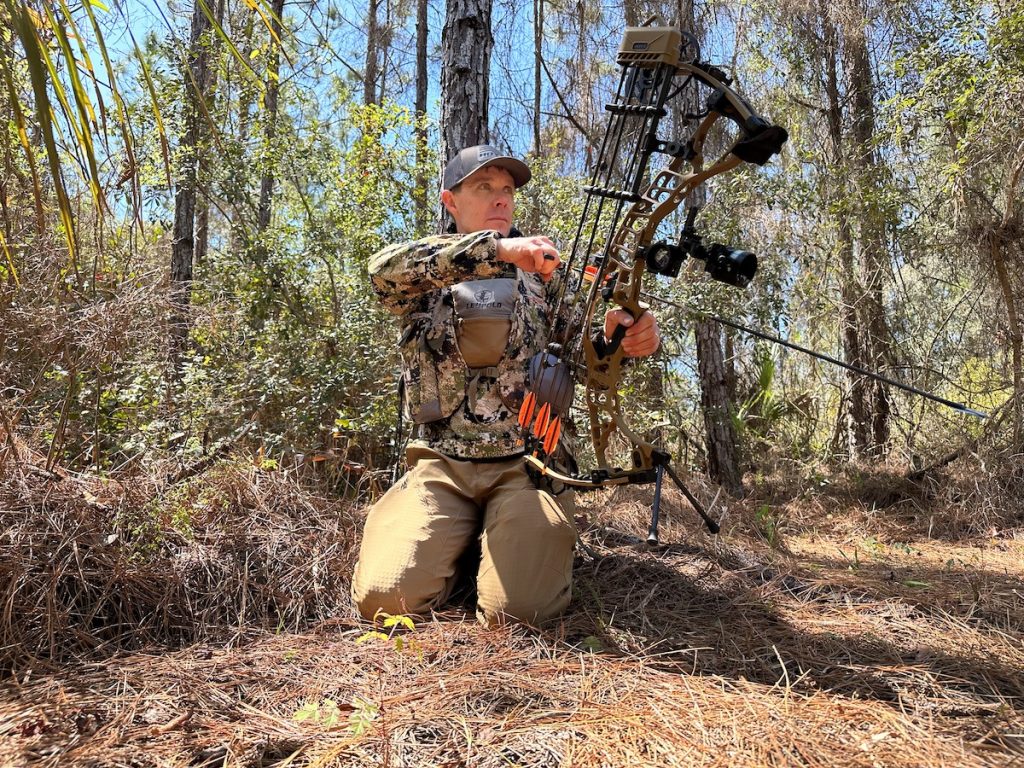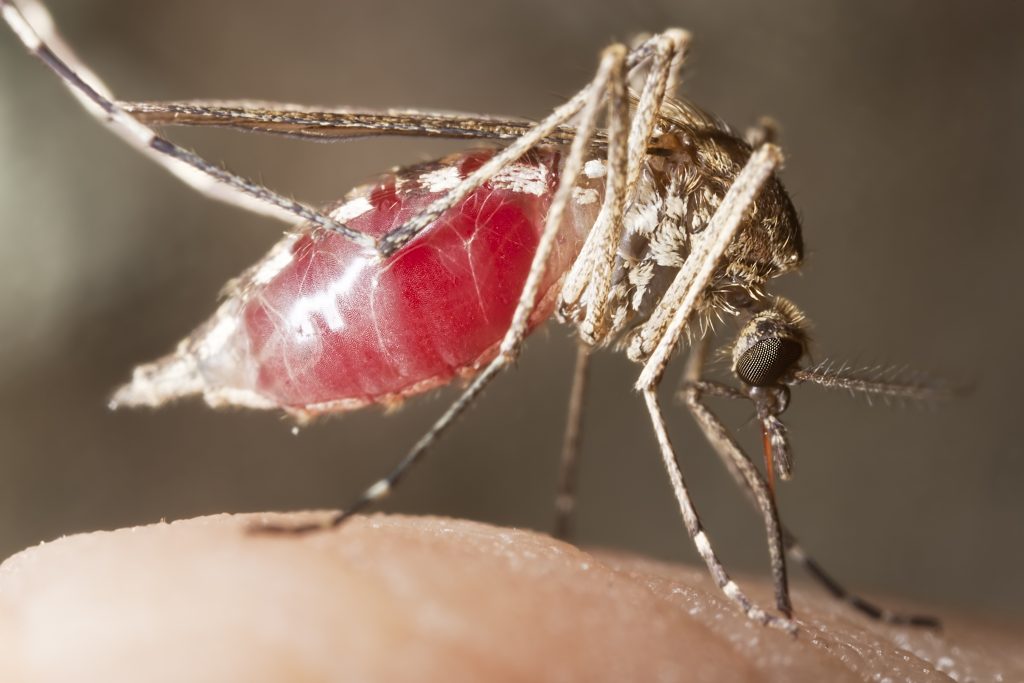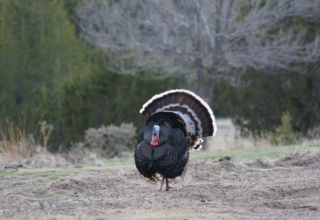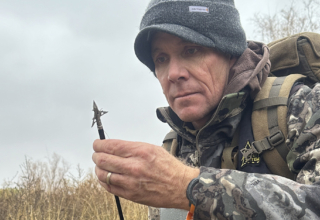The title of this article is not meant to scare but rather grab your attention and make you aware. Ticks and mosquitos will soon be out in full force, and if you don’t take the proper precautions, not only could you become seriously ill, you could lose your life.
by Jace Bauserman
While winter’s grip still holds in some U.S. locales, spring has sprung in others. I just returned from an epic gobbling fest in the Sunshine State.
Regardless of location or current weather, spring is one of the most dangerous times for outdoor people to be in the woods. Yes, you read that last sentence correctly, and the main threat to those in almost every area of the country is vector-borne diseases carried by ticks and mosquitos.
I’m sure you’ve heard the “be prepared for ticks” song and dance before, and many of you are ready to click on a different website, but much of what’s to come is new information. I spent a week with legendary deer biologist and recently-retired UGA professor Dr. Karl Miller. The data he provided about these nasty parasites around a crackling Florida campfire was alarming.

If you plan to be in the spring woods chasing longbeards, bears, fishing, shed hunting, or searching for those delicious Morel mushrooms, you need the to-come intel.
Trends In Vector-Borne Diseases
Over the past decade and some change, factual reporting data has shown diseases passed to humans from infected ticks have tripled over the past 13 years. In 2004, the CDC reported 27,388 cases in the United States, and in 2016, that number jumped to 96,075.
Why?
“Some of it, of course, is reporting,” said Dr. Miller. “However, we have seen an increase in the tick population as deer populations grow and expand, and the range of certain species of ticks has grown. The worst part is that many hunters and those spending time outdoors don’t take proper precautions, and they should. I have had some illnesses from ticks. Those illnesses are no fun. I know people who battle Lyme disease, and it seems everywhere I go in the country, people have scary stories about how a tick bite has negatively affected them or someone they know. Plus, some of these new tick-borne diseases are terrifying.”

The CDC also notes that due to a lack of reporting in areas around the country, the actual number of tick cases could be 10 times the number that has been reported. Over the past two years, tick-born diseases have especially exploded, and now as many as 18 separate conditions have been proven to be caused by ticks.
The Big Six
While 18 tick-borne diseases have been identified, here are six your need to know about and the ticks that carry them.
- Lyme Disease: Most people that spend time outdoors know about Lyme Disease, but most don’t know how critical of a condition it can be. According to the CDC, 476,000 Americans are diagnosed and treated for Lyme disease annually. The nasty tick that totes Lyme is the Blacklegged (Deer) Tick, and though the tick’s range is expanding, its primary regions are the northeast and upper midwest. The number of counties with Blacklegged ticks has more than doubled in the past 20 years. Early symptoms of Lyme disease include fever, rash, chills, muscle fatigue, aching joints, and swollen lymph nodes.
- Rocky Mountain Spotted Fever: While many tick species can carry this disease, the primary culprit is the American Dog (Wood) Tick, which has a massive range. The tick is found in every state east of the Mississippi river and throughout the Midwest into southern Texas. The tick has also been discovered in California. Early symptoms of Rocky Mountain Spotted Fever include high fever, headache, rash, nausea, and vomiting.
- STARI: One of the nastiest and most straightforward to identify ticks is the Lone Star Tick. The females have a white dot or “lone star” on their backs. This tick species is also one of the most aggressive, and its saliva, even if the tick isn’t carrying a disease, can be irritating and cause redness and discomfort at the bite location. The tick ranges from the Midwest into Texas and is also prevalent in the northeast and southeast. While this species is known to carry the Heartland virus and tularemia, its most significant threat is STARI. The most common symptom is a small, more circular, and less tender rash than a Lyme disease rash. Other symptoms include fatigue, headache, fever, muscle aches, and joint pain. There is no diagnostic blood test for STARI; unlike Lyme, symptoms are not long-term.
- Powassan Virus: A tick-borne virus that was once extremely rare is becoming more common in the north-central and northeast. Approximately 10 percent of those with this severe disease die, and roughly 50 percent experience long-term health problems. Carried by the Blacklegged Tick and Groundhog Tick, symptoms include fever, headache, vomiting, weakness, and swelling of the membranes surrounding the brain and spinal cord.
- Alpha-gal Syndrome: Growing evidence suggests that Alpha-gal — a potentially life-threatening allergic reaction after eating red meat — is carried by the Lone Star Tick and other tick species. While the area of grave concern is the Midwest through the East Coast, more cases of Alpha-gal Syndrome are popping up in different regions around the country. Symptoms include a massive allergic reaction after consuming red meat. Dr. Miller expressed during my time with him that he had a student contract Alpha-gal and has slowly been able to wean himself back onto red meat, but in most instances, if you contract Alpha-gal, your red-meat eating days are over.
- Colorado Tick Fever: Caused by a virus transmitted by the Rocky Mountain Wood Tick, which lives in elevations between 4,000 and 10,500 feet in all Rocky Mountain States; symptoms include a biphasic fever — a fever that lasts for several days — headache, body aches, and a feeling of general tiredness.
If you’re not a little terrified by this data, you should be. The country has no safe place to escape ticks or the severe illnesses they cause.
Does this mean you should stop your outdoor pursuits in the spring and summer? Of course not. You must, however, be prepared and aware and take as many precautions as possible.

Sitka To The Rescue
Sitka has dominated the outdoor apparel space, and for a good reason, the manufacturer, arguably, makes the best hunting clothing worldwide. I’ve been a Sitka fanatic for years. Aside from their great gear, I love and respect their ability to create complete hunting systems for specific game pursuits in particular environments.
Enter Sitka’s Equinox Guard Collection. I recently tested the system in one of the tickiest states on the planet — Florida. The Equinox Guard Pant, like all Sitka gear, feels great and moves well with the hunter. The moisture-wicking fabric is light and promotes airflow, but internal leg gaiters tuck into your socks to prevent ticks and chiggers from finding their way to your skin. The gaiters are incorporated into the pant, and the material is so light you don’t even feel it, and like all articles in Sitka’s insect shield Equinox Guard Collection, the pants are permethrin-based. Permethrin is a tick repellent often used by hunters to spray on clothing to deter ticks. Sitka’s insect collection is pre-treated in a safe format — safe enough for a baby onesie.

While the Equinox Guard Hoody and gloves are focused on mosquitos, the garments are also permethrin-based and are designed to limit skin exposure. Sitka’s Product Manager in Product Development, Chris Derrick, said, “We took a control mesh and textiles and developed a heated blood membrane test.” “We covered heated blood with animal intestines to simulate human skin and then covered that with a particular textile.
“Only female mosquitos bite, and we took 20 female mosquitos and put them in a controlled environment. Then, we squished the mosquitos to see how many of them fed. We discovered that when covered with the mechanical textile used in our Equinox Guard line, fewer mosquitos were able to feed.”

The hoody and gloves are light as a feather and are, basically, kevlar for your body. While mosquitos haven’t been an issue where I’ve hunted this spring, ticks have been, and I have yet to have a single tick bite. Plus, this clothing line provides advanced protection from arguably the most dangerous silent killer, the sun. The hoody naturally sports a form-fitting hood but also incorporates a face mask. Sitka is going the extra mile to keep hunters safe from tick and mosquito-borne illnesses, and that effort needs to be applauded. Plus, the garments are so amazingly comfortable and promise an athletic fit.











